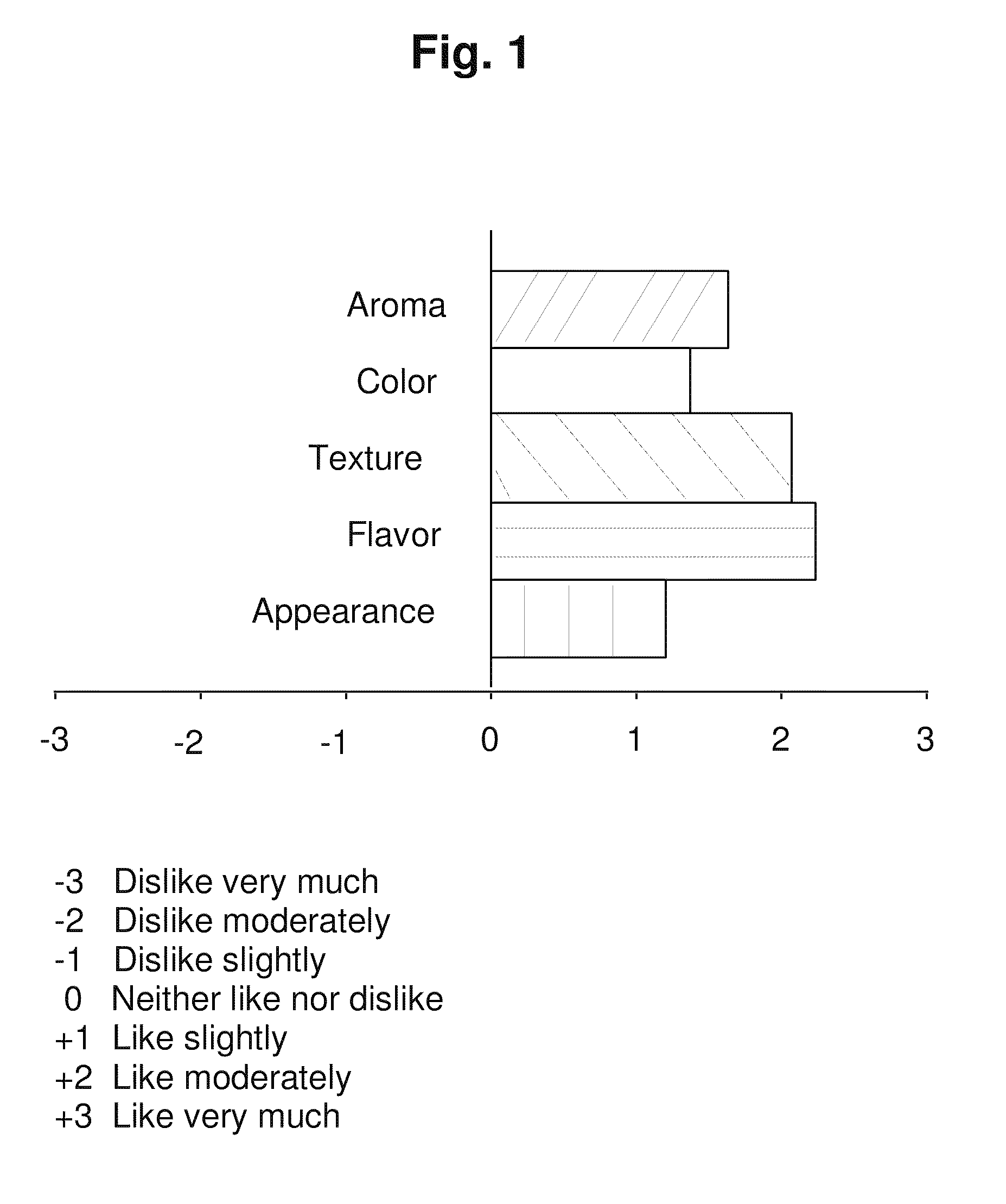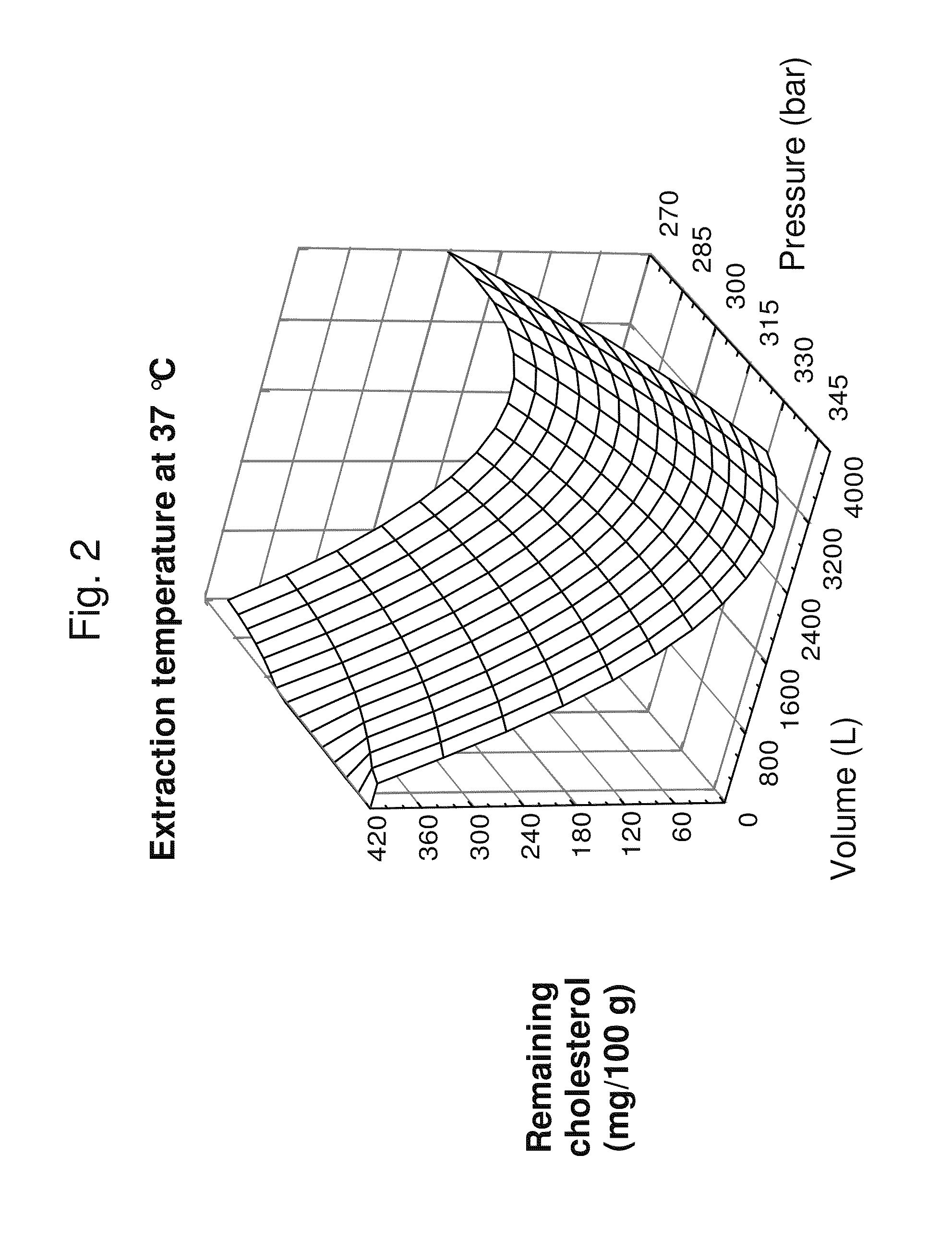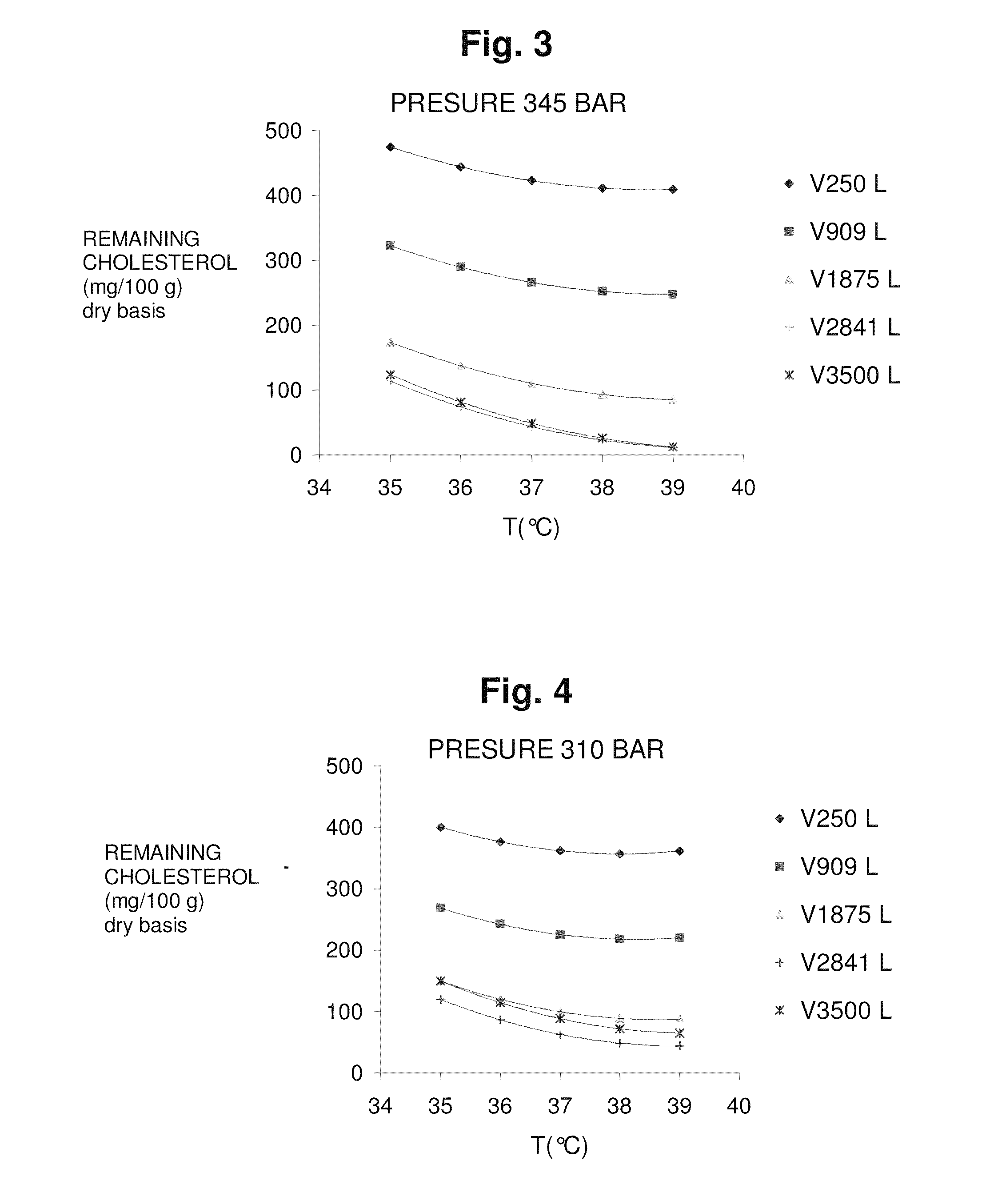Low-cholesterol shrimp and method of obtaining same
a technology of low cholesterol and shrimp, which is applied in the field of low cholesterol shrimp and the method of obtaining same, can solve the problems of not being able to reduce the cholesterol content of proteinic foods, few processes based on supercritical extraction have been implemented in the food industry, and the application of supercritical fluid extraction (sfe) in fresh meat products has not had much success in cholesterol reduction. , to achieve the effect of preventing denaturation of shrimp
- Summary
- Abstract
- Description
- Claims
- Application Information
AI Technical Summary
Problems solved by technology
Method used
Image
Examples
example
[0056]The raw material used was in this example was “blue shrimp” (Litopenaeus stylirostris) and “white shrimp” (Litopenaeus vannamei), 16-20 count per pound and deheaded, which were kept under frozen storage (−18° C.) until processed.
[0057]Shrimp were thawed, peeled and individually refrozen at −40° C. for a period of 4 hours using a quick freezing system. The shrimp were then freeze-dried until a final water content of 1-5% was reached. The temperature on the product's surface as well as that inside was carefully monitored using thermocouples. When the equipment reached a 0.1 mm Hg vacuum the following program of conditions were followed:
Temperature (° C.)Time (hrs)−29101504-5 a3515-20 b251-3 ca The time depends on the level of vacuum achieved, which should not exceed 0.2 mm Hg.b The time depends on when the shrimp reach a maximum temperature of 5 to 10° C.c Depending on when the internal shrimp temperature becomes the same as the shrimp surface temperature.
[0058]Once the freeze d...
PUM
 Login to View More
Login to View More Abstract
Description
Claims
Application Information
 Login to View More
Login to View More - R&D
- Intellectual Property
- Life Sciences
- Materials
- Tech Scout
- Unparalleled Data Quality
- Higher Quality Content
- 60% Fewer Hallucinations
Browse by: Latest US Patents, China's latest patents, Technical Efficacy Thesaurus, Application Domain, Technology Topic, Popular Technical Reports.
© 2025 PatSnap. All rights reserved.Legal|Privacy policy|Modern Slavery Act Transparency Statement|Sitemap|About US| Contact US: help@patsnap.com



